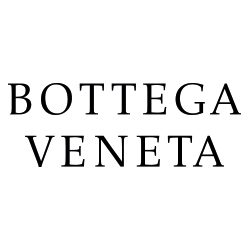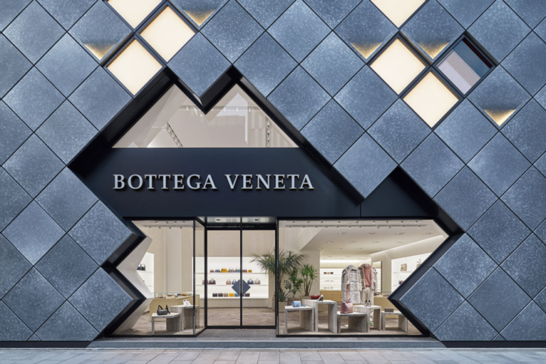Contents
Summary
Founded in 1966 in Vicenza, Bottega Veneta is an Italian luxury fashion house with roots in artisanal leather goods. Its headquarters are located in Milan and it is presently owned by the Kering Group. The brand has grown from a family company to an estimated 1.5 billion euro global company through changes in ownership, creativity and leadership, and currently going through a new phase with newly appointed creative director Matthieu Blazy and CEO Leo Rongone.
History
Bottega Veneta was founded in 1966 in Vicenza, Italy by Michele Taddei and Renzo Zengiaro. The brand’s primary product was leather goods which is a distinctive category of Bottega Veneta today. Crafting artisanal leather goods, the luxury fashion brand developed a distinctive leather weaving design- the Intrecciato- which became its most recognisable staple. Perceiving that its sewing machines lacked strength compared to other manufacturers of leather goods.. bottega Veneta realised that it couldn’t produce robust leather. The Intrecciato- or braided weave- was introduced as a solution by weaving delicate leather to create a woven pattern and make handbags durable. Today this element appears across all categories of Bottega Veneta’s accessories.
Renzo Zengiaro left the company at the end of the Seventies. Soon after Michele Taddei handed over the company to his former wife Laura Braggion who headed the company with her second husband Vittorio Moltedo. She would contribute to the early success of the brand in the United States by becoming an assistant of Andy Warhol and also opened the first store in New York in 1972.
In the late Nineties Bottega Veneta launched its first ready-to-wear collection designed by Edward Buchanan and Creative Director Laura Moltedo. However the turnover of the creative team was high and the label struggled to retain its talent. Rescued from near-bankruptcy by Domenico di Sole and Tom Ford of the Gucci Group in 2001.. the company was acquired by what would later become Kering. Per WWD: “Initially Gucci Group bought a 66.67 percent stake in Bottega Veneta via a capital investment of $96.2 million and the purchase of shares from its stockholders for $60.6 million for a total of $156.8 million. The remaining 33.33 per cent was in the hands of its shareholders — the Moltedo family.”
Tomas Maier– who had spent nine years at Hermès and previously worked at Guy Laroche and Sonia Rykiel- redefined Bottega Veneta in an era of excessive luxury branding. Per Vogue: “Maier was tasked with turning around what was then a label on the verge of bankruptcy. He rooted his vision in the label’s reputation for time-tested craftsmanship… paired with his own fascination with functionality. He quickly found success, surpassing $1 billion in sales by 2012—which at the time made Bottega Veneta Kering’s fastest-growing label.”
CEO Patrizio di Marco- who had been recruited from Céline in the late Nineties- repositioned Bottega Veneta as a luxury brand, growing revenues more than tenfold in six years. This led to di Marco being promoted to head of the Gucci Group. His successor at Bottega Veneta- Marco Bizzarri- led the growth trajectory in Asia. The brand however was deeply impacted by the luxury downturn of the decade.
In 2018 Tomas Maier left Bottega Veneta and British designer Daniel Lee was brought in to revive the brand, having worked for Céline, Margiela and Balenciaga. He built momentum for the brand with disruptive strategies like erasing its Instagram account and staging traveling fashion shows in London, Berlin and Detroit. Per BoF: “Lee was drafted in by its parent company Kering which sought to return the brand to its former strength. The designer is tipped as an opportunity for Kering to tap into the Phoebe Philo-era of Old Céline following Hedi Slimane’s reorientation of the Parisian.” Lee’s first runway show debuted in Milan in February 2019. At the 2019 British Fashion Awards Bottega Veneta won Brand of the Year” while Lee won “Designer of the Year,” “British Designer of the Year — Womenswear” and “Accessories Designer of the Year.”
In November 2021, Lee stepped down from his position as creative director at Bottega Veneta. After his departure Matthieu Blazy was promoted internally. He held his first show as Creative Director on 26 February 2022 at Milan Fashion Week. ”Matthieu Blazy is an extraordinarily talented individual whom I am proud and excited to entrust with the creative helm of our luxury House” Leo Rongone, CEO of Bottega Veneta, told Harpers Bazaar. “Bottega Veneta has always been equated with signature craftsmanship and distinctive creativity. Matthieu’s appointment will further enhance the modern relevance of our brand and accelerate our growth, while preserving the values that are at the core of Bottega Veneta.”
Bartolomeo Rongone- who was appointed CEO of the brand in 2019- helped the luxury brand log a 24.2 per cent increase in revenues in 2021.. reportedly surpassing the $1.6 billion mark. This comes with years of experience in the luxury sector including Head of Business Intelligence and other roles at Fendi. He joined Kering in 2012 as Chief Operating Officer of Yves Saint Laurent, responsible for product and global retail operations. At Bottega Veneta Bartolomeo is tasked with realising the full potential of the new creative force that has been driving the House since 2018.
Vision
Bottega Veneta’s vision is to become the go-to luxury brand for customers who seek timeless, elegant, and artisanal Italian fashion. This vision reflects the brand’s commitment to capturing the essence of classic sophistication and offering a unique blend of style and exceptional craftsmanship that transcends fleeting trends. With each product, Bottega Veneta seeks to merge artistry with utility, appealing to discerning customers who value both aesthetic beauty and unparalleled quality.
Rooted in the rich heritage of Italian craftsmanship, Bottega Veneta positions itself as an emblem of enduring excellence. The brand’s vision emphasizes the creation of pieces that embody meticulous attention to detail, utilizing traditional techniques to craft modern yet timeless items. This dedication to quality and heritage enables the brand to uphold its reputation for exquisite design that honors Italy’s storied history of artisanal fashion.
Bottega Veneta’s vision aspires to celebrate a legacy of sartorial finesse while embracing innovation that enhances its classic appeal. By focusing on sophisticated minimalism and crafting items meant to last, the brand aims to resonate with those who appreciate luxury defined by longevity and depth rather than fleeting popularity. This perspective ensures that Bottega Veneta remains a beacon for those who seek the enduring and the exceptional in their fashion choices.
Mission
Bottega Veneta’s roots lie in Italian craftsmanship. The luxury fashion brand’s mission centers on preserving its rich Italian craftsmanship while staying attuned to the dynamic demands of the modern consumer market. Founded in 1966 in Vicenza, Italy, Bottega Veneta is renowned for its meticulous attention to detail, traditional techniques, and the signature intrecciato weave that defines its leather goods. Bottega Veneta’s mission is to honor this heritage by continuing to produce high-quality, handcrafted products that reflect timeless elegance and exceptional artistry.
At the same time, Bottega Veneta is committed to evolving with the times to maintain its relevance in a competitive and ever-changing fashion landscape. This involves integrating innovative designs, embracing contemporary trends, and responding to shifts in consumer preferences while remaining true to its core values of understated luxury and artisanal excellence. The luxury brand’s approach ensures that it not only upholds its legacy of Italian craftsmanship but also adapts to the modern market, offering products that resonate with today’s discerning and style-conscious consumers. Through this balance of tradition and innovation, Bottega Veneta continues to cultivate its prestigious reputation and appeal.
Products and Services
Bottega Veneta is renowned for its luxurious products, which include high-quality leather goods, ready-to-wear clothing, footwear, accessories, and fragrances. Each item reflects the brand’s commitment to artisanal Italian craftsmanship, with a strong emphasis on minimalistic design and timeless elegance. The brand is particularly famous for its signature Intrecciato weaving technique, showcased in their handbags and leather products, which embodies both durability and sophisticated aesthetics. Bottega Veneta’s product offerings appeal to those who seek understated luxury that speaks through craftsmanship and detail rather than overt branding.
In addition to its products, Bottega Veneta offers services that enhance the customer experience, such as personalized shopping assistance and bespoke options for select items. The brand focuses on delivering a high level of service both in-store and online, ensuring an exclusive and seamless experience that aligns with its luxury positioning. This commitment to exceptional service underscores Bottega Veneta’s vision of combining heritage and modernity to provide customers with items and experiences that are timeless and uniquely tailored to their needs.
Recognition and Awards
Bottega Veneta is recognized for its artisanal craftsmanship, particularly its meticulous leatherwork. Bottega Veneta’s signature intrecciato weave—a distinctive basket-weave technique—is a hallmark of their luxury leather goods, showcasing the luxury fashion brand’s dedication to skilled craftsmanship and attention to detail. The brand is distinguished by its use of premium materials and innovative design.
While rooted in tradition, Bottega Veneta combines traditional techniques with contemporary design elements, leading to fresh and distinctive interpretations of classic styles. Overall, Bottega Veneta’s recognition stems from its ability to blend heritage craftsmanship with modern sophistication, delivering luxury products that are both timeless and innovative.
Key Team
Matthieu Blazy (Creative Director)
Bartolomeo Rongone (CEO)
François-Henri Pinault (Chairman and CEO- Kering)
References
- Official website Bottega Veneta
- Bottega Veneta Crosses the $1 Billion Mark BoF
- Bottega Veneta Opens School for Future Artisans WWD
- Instagram account of Bottega Veneta Instagram
- Daniel Lee’s Successor at Bottega Veneta Harpers Bazaar
- Facebook account of Bottega Veneta Facebook
- Bottega Veneta’s CEO Maps Out Strategies WWD
- LinkedIn account of Bottega Veneta LinkedIn
- Wikipedia page of Bottega Veneta Wikipedia
- Bottega Veneta Unveils Maison in Milan WWD
- How Tomas Maier Saved Bottega Veneta with a Woven Bag NBC New York
- Kering’s Marco Bizzarri has the billion-euro touch FT
- Coty, Bottega Veneta Ink Scent Deal WWD
- Bottega Veneta Vogue
- Bottega Veneta Bets That You Still Want to Shop in a Store GQ
- Kering taps Carlo Alberto Beretta as CEO of Bottega Veneta Fashion United
- Gucci gets majority stake in Bottega Veneta NY Post
- Bottega Veneta SS24 Vogue





